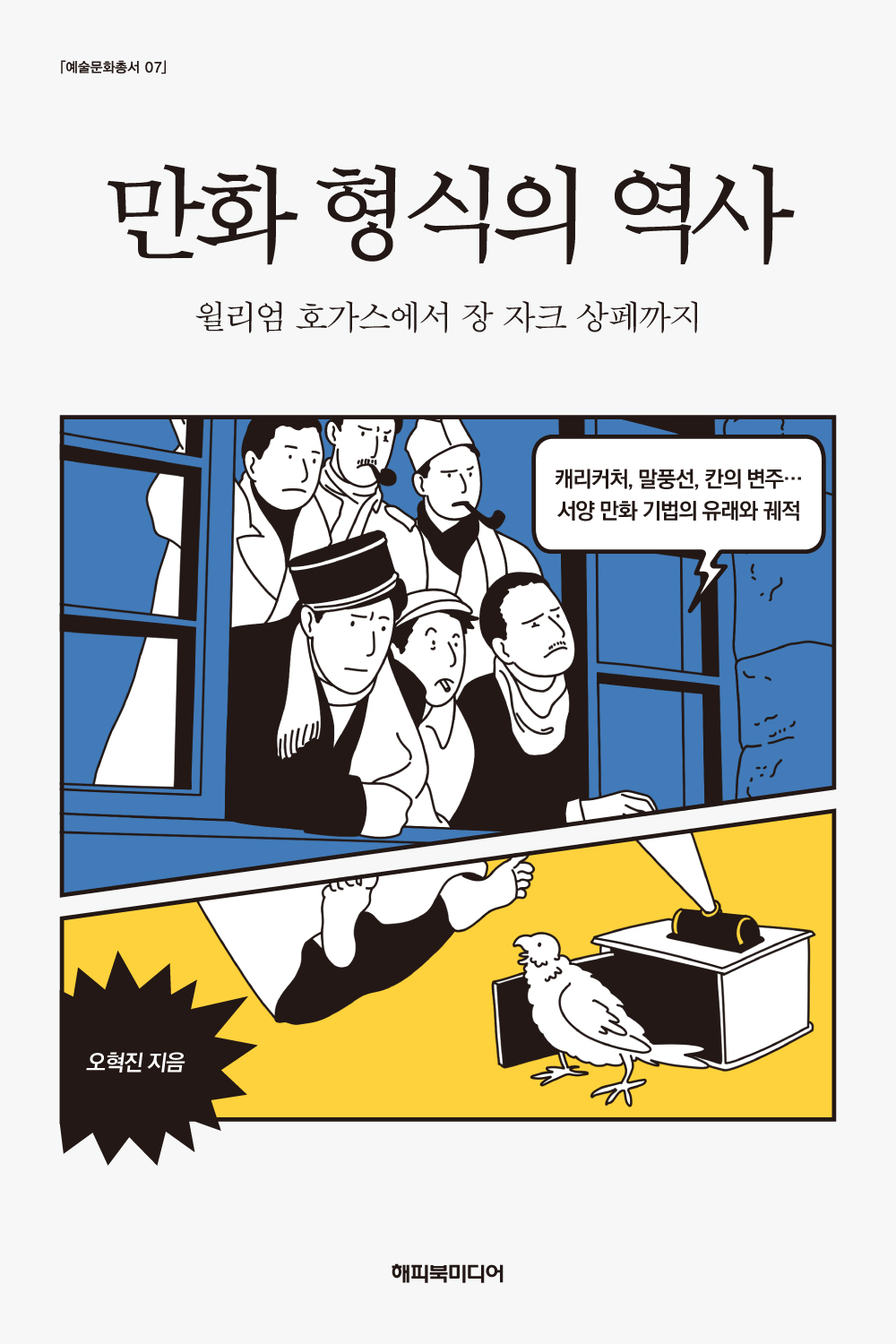
The History of Cartoon Forms
Oh HyukJin
| Pages | 224 |
|---|---|
| Dimensions | 150*225 |
| ISBN | 978-89-98079-56-7 03650 |
| Price | 20,000 WON |
| Date | 2022-11-04 |
| Contents | Criticism, Theory |
Overview
From William Hogarth to Jean-Jacque Sempé
Tracing the history and evolution of cartoon forms - from modern cartooning to contemporary graphic novels.
Comics are deeply embedded in our everyday life. Caricature, speech bubbles, and division/variation of frames... When and how were these familiar graphic novel conventions established? The History of Cartoon Forms analyzes the works of European and American cartoonists, from William Hogarth to Jean-Jacques Sempé, and enriches the experience of reading graphic novels.
Author Oh HyukJin aimed to achieve the following objectives in this volume. First, he featured pivotal moments in European and American cartoon history and traced the development of modern cartooning into contemporary graphic novels. Second, Kwon examined the emergence and evolution of graphic novel conventions, thereby investigating the essence of cartoon forms.
Cartoonists create blocks of symbols and narrative. In other words, they create visual conventions such as caricature, symbolism, frames, gutters, and narratives. This offers a great starting point for criticism on contemporary graphic novels. Literary criticism is a process of understanding, explaining, and contextualizing artwork, the product of the idea, thereby evaluating the historical importance of the form. Kwon demonstrates a meaningful graphic novel criticism through this book.
When it comes to criticism of graphic novels, the easiest approach is discourse on the narrative. However, Kwon steers away from this enticing approach that fails to examine the essence of graphic novels. Such an approach fails to give due credit to graphic novel forms and the visually captivating images that span the two-dimensional pages.
What is the origin of cartoons?
When defining art and tracing the history of art, one is ultimately faced with the conundrum of having to identify "original art" that does not derive from a prior work. Unlike paintings, sculptures, or music where it is difficult to identify the original piece, cartoons are a modern art form that can be traced to its origin. One of the more commonly used definition of a cartoon is "deliberately placed sequential art or figures." Then, who pioneered the cartoon that meets this definition? Kwon examines the format and history of cartoons through European and American cartoonists and their works.
William Hogarth's works set forth the original prototypes of early cartoons. Widely considered a pioneer of cartoons, Hogarth shaped the work of numerous cartoonists in the years to come. He presented new possibilities for cartoons by introducing irony to the rigid parameters of engraved prints.
Rodolphe Töpffer, known as the father of the modern comics, did not invent cartoons themselves; however, he recognized cartoons as an independent art form with distinct principles. Using caricatures, he challenged the norms of idealistic imitation of nature.
About author
Graphic novel critic. Oh HyukJin received the Critic M comic criticism award and the Korea Creative Content Agency cartoon criticism award. His articles appeared in Critic M, Your Mana, Critic-al, Colleague, Now, Manhwa Kyujanggak, Graphic Novel, and Today's Literary Criticism. Kwon's research focuses on the history and format of comics.
